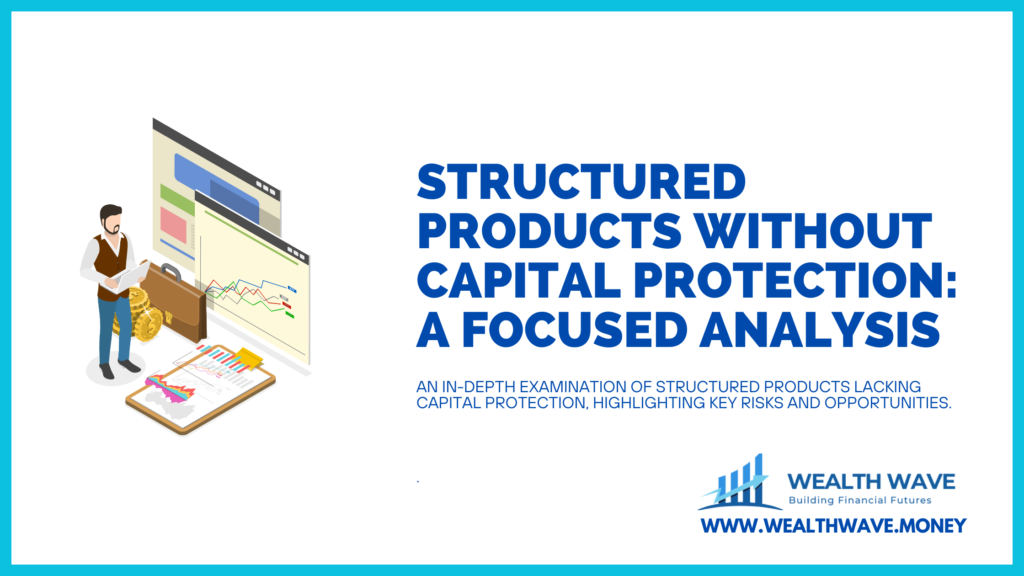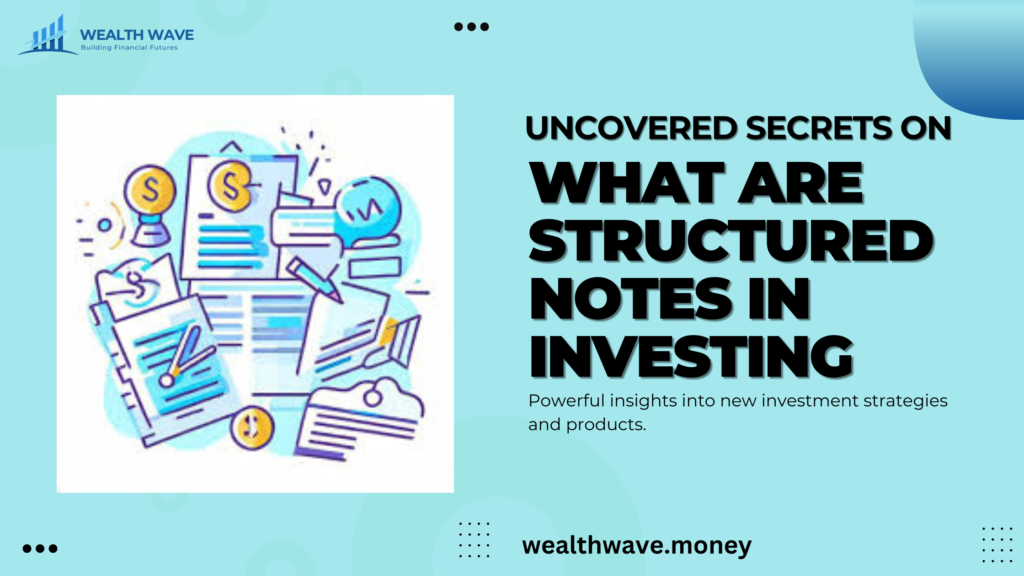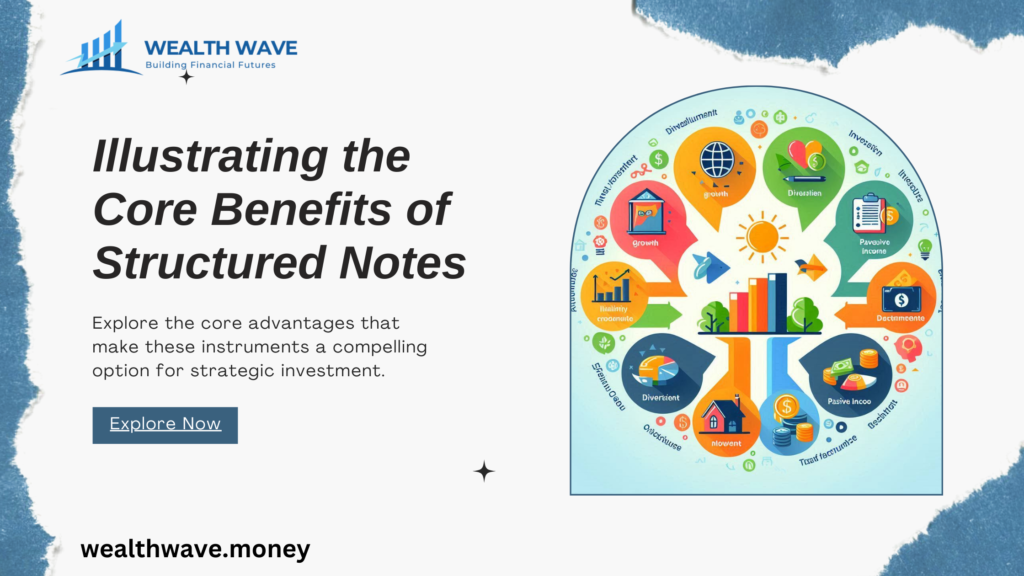
Navigating the world of investments can feel like walking a tightrope, balancing the desire for growth with the fear of losing hard-earned money. It’s a valid concern, especially when venturing into territories like structured products that lack capital protection.
We’ve treaded through this uncertainty too and understand how daunting it can be to scout out safe yet fruitful investment avenues. A crucial insight we stumbled upon is the reality that most structured notes come without any principal protection—a sobering thought meaning investors might face losing their entire invested amount.
Our journey of exploration brought us closer to unraveling the complexities of these financial instruments, aiming to shed light on them for you. This piece dissects what structured products are, their workings minus capital protection, and the inherent risks they carry.
Moreover, it delves into alternative avenues within the realm of structured investments—ranging from leverage products to those offering varying degrees of capital protection or none at all.
Let us help steer your understanding of these options more clearly. Knowledge is power; continue reading to empower yourself!
Key Takeaways
- Structured products without capital protection are investments that might lead to losing the full amount you put in. They combine different financial tools, like derivatives and stocks, to create a way for investors to potentially make money based on market changes. But there’s no guarantee you’ll get your initial investment back.
- These financial instruments come in various forms, including those that let investors participate in market gains but don’t protect their starting money. Costs, such as management fees, can eat into any profits made from these investments. So it’s important to understand all the charges before investing.
- The risks of structured products without capital protection include large fluctuations in value due to market volatility and problems selling the product if needed because they often lack liquidity. Investors need to carefully consider these risks since there is a significant chance of losing their entire investment if things don’t go well.
- Leveraged structured products can amplify both wins and losses, making them an attractive yet risky choice for investors looking for bigger returns. Since most do not provide principal protection, being prepared for possible substantial losses is crucial.
- It’s key for investors considering these types of products to evaluate their own risk tolerance against the potential high rewards or heavy losses they could face. Lack of FDIC insurance means there’s no safety net if the investment goes south, highlighting the importance of doing thorough research and possibly seeking advice from financial experts before diving into structured products without capital protection.
What Are Structured Products?

Structured products are unique investment options that combine different financial instruments to create a specific payoff structure. They often include derivatives and can be linked to various underlying assets, such as stocks or commodities.
Definition

Structured products are investment products that combine various financial instruments to create a specific payoff structure. They often include derivatives and can be linked to assets such as equities, commodities, or interest rates.
Some structured products offer capital protection, while others do not; particularly, those without capital protection may lead to the loss of the entire investment amount. Investors should understand that most structured notes lack principal protection, making them more speculative in nature.
These products are designed for investors who seek alternative investments with defined outcomes based on market performance. Barrier products fall into this category but carry higher risks due to their reliance on certain conditions being met within a set timeframe.
Given their complexity and potential lack of FDIC insurance, we must carefully assess our risk tolerance when considering structured products without capital protection.
Types of Structured Products

Structured products come in various types, each catering to different investment strategies and risk profiles. We can categorize them into capital protection products and participation products.
Capital protection products offer some level of security for the principal amount invested, making them relatively safer within this asset class. However, most structured notes do not provide any principal protection at all, exposing investors to the risk of losing their entire investment.
Participation products allow us to engage in market upside potential without upfront costs or guarantees on our initial investments. These offerings often focus on yield enhancement through exposure to underlying assets while carrying higher risks due to lack of capital safeguards.
Understanding these distinctions enables us to assess our investor risk effectively, especially in a landscape influenced by liquidity and market volatility considerations.
How Do Structured Products Work?

Structured products combine various financial instruments to create unique investment solutions. They work by linking returns to the performance of an underlying asset, such as stocks or bonds, allowing investors to potentially benefit from market movements while assuming certain risks.
The Creation Process

The creation of structured products begins with the design phase, where financial institutions develop a specific product based on market conditions and investor demand. In creating these instruments, banks often combine different assets like stocks or commodities along with derivatives to establish unique payoffs at maturity.
This process can be complex due to regulatory requirements and pricing models used for risk management.
We note that many structured products, especially those without capital protection, may result in unsecured debt during their maturity period. Investors must understand how these combinations affect potential returns since some products do not offer any principal protection.
This lack of security could lead to loss of the full investment amount if market conditions are unfavorable. Moving forward, we will explore how returns are calculated in structured products specifically aimed at participation strategies.
Calculating Returns
Returns on structured products without capital protection can vary significantly based on their underlying assets. We assess performance through various metrics, often linked to equity, commodity, or index movements.
Unlike capital-protected products, which might limit upside potential to ensure safety, these structures can yield higher returns but carry the risk of losing our entire investment.
Calculating returns also involves considering fees and market conditions. Costs associated with structured products may diminish overall profitability, making awareness crucial for effective hedging strategies.
Understanding these dynamics enables us to make informed decisions in this complex investment landscape. The next section will explore different types of capital protection options available within structured products.
Performance and Cost Considerations
Structured products without capital protection can present both performance and cost challenges for investors. These instruments often lack the safety net that capital protection provides, leading to a higher risk of losing the entire investment.
Calculating returns on these products requires careful consideration of various factors, including market conditions and underlying asset performance. Costs associated with structured products may include management fees or other expenses that can further erode profitability.
Investors should also note that while some structured notes might offer significant upside potential, they do not come with principal protection. This means we could face substantial losses if markets move unfavorably.
Understanding the relationship between costs and potential returns is crucial, especially as structured products typically do not feature FDIC insurance for investor protection and may lack liquidity at times when we need it most.
Capital Protection Options

Capital protection options determine how much risk investors take on. Some products offer partial protection, while others expose investors to full market risks.
Partial Protection
Partial protection in structured products means that investors may safeguard a portion of their principal while still having the opportunity to gain higher returns. These products usually operate within defined parameters, allowing for limited exposure to market movements.
While we can potentially enjoy some level of investment security, there remains a risk of losing the protected amount if the underlying asset underperforms significantly.
Investors should understand that partial capital protection does not eliminate risk entirely. The potential losses could still be significant if adverse market conditions arise. Furthermore, choosing products with partial protection often limits our ability to capitalize fully on upward market trends compared to unprotected investments.
Understanding these nuances is essential when considering structured products without full capital guarantees.
No Protection
Structured products that offer no capital protection present a unique set of risks. Investors in these products could lose the entire amount they have invested. Most structured notes fall into this category, meaning there is potential for significant loss without any safety net.
This absence of principal protection can be appealing for those seeking higher returns but comes with heightened risk and volatility.
Understanding these dynamics is crucial as we navigate our investment choices. The complexity surrounding non-protected structured products often clouds their true risk profile, making it essential to evaluate each option carefully before proceeding.
Lack of liquidity might also complicate matters, limiting our ability to exit positions when needed and potentially exacerbating losses during unfavorable market conditions.
Leverage Products
Leverage products are a type of structured product that can amplify our exposure to market movements. These instruments can magnify both gains and losses, making them attractive yet risky for retail investors.
Most structured notes do not offer any principal protection, meaning we could lose the entire amount invested. This potential for significant loss highlights the importance of understanding the associated risks before investing in such products.
Using leverage means we may control a larger position than what our initial investment would allow. While this strategy might lead to impressive returns during favorable market conditions, it also heightens our vulnerability during downturns.
We must be acutely aware of these dynamics as we explore options within structured investments without capital protection. Next, let’s examine the various risks and considerations involved with these financial instruments.
Risks and Considerations

Investors face multiple risks with structured products without capital protection, including market volatility and potential liquidity issues. It’s crucial to assess these factors before making investment decisions.
More insights on these topics await in the subsequent sections.
Lack of FDIC Insurance
Structured products do not come with FDIC insurance. This absence means that we cannot rely on the same safety net typically associated with bank accounts. Most structured notes lack any principal protection, which could result in losing our entire investment.
While some structured products offer capital protection, those without it can expose us to higher risks and potential losses. Understanding these factors is crucial as we consider investing in these complex financial instruments.
Liquidity
Liquidity is a critical factor to consider with structured products lacking capital protection. Many of these products suffer from inadequate liquidity, making it challenging for us to sell or access our investments quickly.
As we evaluate investment options, understanding that some structured notes may not offer principal protection becomes essential. The potential lack of buyers in the market can lead to difficulties when we want to exit our investment before maturity.
Therefore, we must acknowledge this risk as part of our overall assessment and decision-making process regarding structured products without capital protection.
Market Volatility
Market volatility poses significant risks for structured notes and structured products without capital protection. These investments can fluctuate dramatically based on market conditions, which means they may experience sharp declines in value.
Most structured notes do not provide any principal protection, exposing us to the possibility of losing our entire investment amount. Investors face challenges when navigating these market swings, as unpredictable shifts can severely impact performance and returns.
Understanding how market volatility affects our investments is crucial. Structured products often lack liquidity, making it difficult to sell them when desired or needed. This lack of liquidity increases exposure during volatile periods, further complicating our ability to manage risk effectively.
We must remain aware of these dynamics to make informed investment choices amidst changing market environments.
Investor Risk
Investors face significant risks when engaging with structured products without capital protection. Most structured notes lack any principal protection, which means we could lose our entire investment amount.
These products can be complex and are not insured by the FDIC, adding an extra layer of uncertainty. Liquidity is another concern; some structured products may not be easily tradable in the market, further exposing us to potential losses during adverse conditions.
Understanding these factors is crucial for making informed decisions about investing in such instruments.
Conclusion

We have explored the intricacies of structured products without capital protection. These investment vehicles can offer unique opportunities, yet they also come with significant risks.
Understanding their structure and associated complexities is crucial for making informed decisions. Practical knowledge empowers us to navigate these options effectively and maximize our potential returns.
Let us remain proactive in our investment strategies, ensuring we are well-prepared to take on new challenges in the financial landscape.
FAQs
Q1. What are structured products without capital protection?
Ans. Structured products without capital protection are investment tools that do not guarantee the return of your initial investment. They can offer higher potential returns but carry more risk.
Q2. How do these structured products work?
Ans. These products combine different financial instruments, like stocks and bonds, to create unique investment opportunities. The performance depends on market conditions and underlying assets.
Q3. Who should consider investing in structured products without capital protection?
Ans. Investors who seek higher returns and understand the risks may find these structured products appealing. It is important to have a clear grasp of how they function before investing.
Q4. What are the main risks involved with these investments?
Ans. The primary risk is losing part or all of your initial investment if the market does not perform as expected. Investors should carefully assess their risk tolerance before choosing this type of product.




